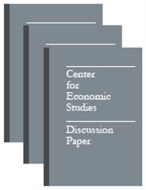The Distributional Effects of an Investment-Based Social Security System
The Distributional Effects of an Investment-Based Social Security System
Abstract
In this paper we study the distributional impact of a change from the existing pay-as-you-go Social Security system to one that combines both pay-as-you-go and investment-based elements. Such a transition can avert the large tax increases that would otherwise be necessary to maintain the level of benefits promised under current law as life expectancy increases. According to the Social Security actuaries (Board of Trustees, 1999), retaining the existing pay-as-you-go system would eventually require raising the current 12.4 percent Social Security payroll tax rate to about 19 percent to maintain the current benefit rules or cutting benefits by more than one-third in order to avoid a tax increase. In contrast, previous research showed that adding an investment-based component with savings equal to two percent of covered earnings to the existing 12.4 percent pay-as-you-go system would be sufficient to maintain the benefits promised under current rules without any increase in tax rates (Feldstein and Samwick 1997, 1998a, 1998b).




